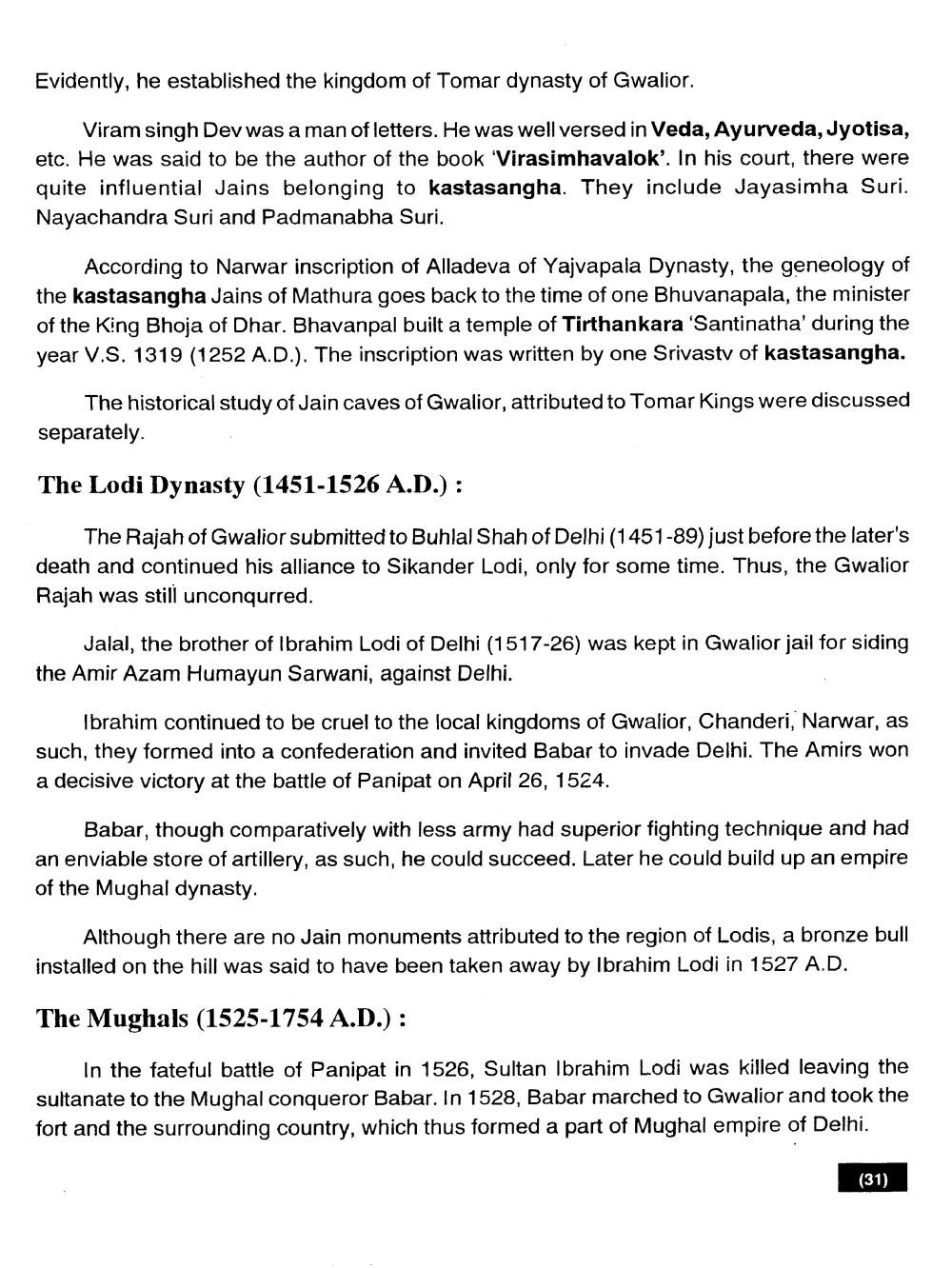________________
Evidently, he established the kingdom of Tomar dynasty of Gwalior.
Viram singh Dev was a man of letters. He was well versed in Veda, Ayurveda, Jyotisa, etc. He was said to be the author of the book 'Virasimhavalok'. In his court, there were quite influential Jains belonging to kastasangha. They include Jayasimha Suri. Nayachandra Suri and Padmanabha Suri.
According to Narwar inscription of Alladeva of Yajvapala Dynasty, the geneology of the kastasangha Jains of Mathura goes back to the time of one Bhuvanapala, the minister of the King Bhoja of Dhar. Bhavanpal built a temple of Tirthankara 'Santinatha' during the year V.S. 1319 (1252 A.D.). The inscription was written by one Srivastv of kastasangha.
The historical study of Jain caves of Gwalior, attributed to Tomar Kings were discussed separately.
The Lodi Dynasty (1451-1526 A.D.) :
The Rajah of Gwalior submitted to Buhlal Shah of Delhi (1451-89) just before the later's death and continued his alliance to Sikander Lodi, only for some time. Thus, the Gwalior Rajah was still unconqurred.
Jalal, the brother of Ibrahim Lodi of Delhi (1517-26) was kept in Gwalior jail for siding the Amir Azam Humayun Sarwani, against Delhi.
Ibrahim continued to be cruel to the local kingdoms of Gwalior, Chanderi, Narwar, as such, they formed into a confederation and invited Babar to invade Delhi. The Amirs won a decisive victory at the battle of Panipat on April 26, 1524.
Babar, though comparatively with less army had superior fighting technique and had an enviable store of artillery, as such, he could succeed. Later he could build up an empire of the Mughal dynasty.
Although there are no Jain monuments attributed to the region of Lodis, a bronze bull installed on the hill was said to have been taken away by Ibrahim Lodi in 1527 A.D.
The Mughals (1525-1754 A.D.):
In the fateful battle of Panipat in 1526, Sultan Ibrahim Lodi was killed leaving the sultanate to the Mughal conqueror Babar. In 1528, Babar marched to Gwalior and took the fort and the surrounding country, which thus formed a part of Mughal empire of Delhi.
(31)




